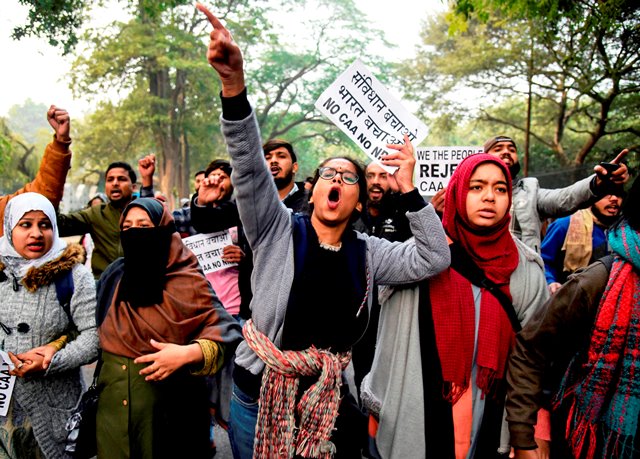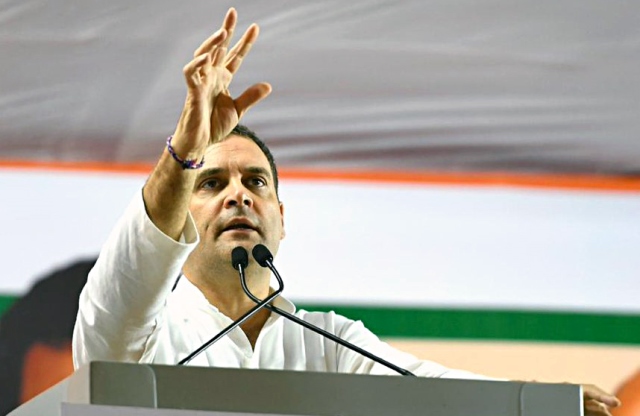The blood in Uttar Pradesh has still not dried. At least 22 people have died in various towns of this state, even as clashes continue. The police in a bizarre argument has said that the people killed, died because of the crossfire within protesters. Only the UP Police can give such an argument even while media reports say they allegedly went inside homes of Muslims in Muzaffarnagar at midnight, beat up residents, including women and children, broke whatever they saw including refrigerators, TVs and washing machines, and stole money. Despite the police denial, there is visual evidence to prove how law enforcement agents became lawless goons loaded with a communal bias. After all, Chief Minister Yogi Adityanath had called for ‘revenge’. That the Prime Minister, the Home Minister are backing Yogi is also without doubt.
Will the people of Uttar Pradesh get justice?
In 1984, media reporters, including this writer, were on the spot in the State-sponsored killings of Sikhs in Delhi and elsewhere, master-minded by Congress goons and politicians, especially in Delhi. The mediapersons covered on foot bloody lanes and bylanes in east and west Delhi, witnessed the burnt out homes with the smell of kerosene.
Also Read: Deconstructing India’s New Citizenship Law
When a big tree falls, the earth will shake, said Rajiv Gandhi, then. The Congress ran a diabolical and sinister anti-Sikh campaign after Indira Gandhi’s assassination by her own bodyguards. The Congress won by a huge margin in the next national polls. The BJP got two seats in the Lok Sabha. It took more than three decades to put Sajjan Kumar in jail. After god knows how many commissions of enquiry.
How did the Sikhs feel then? Did they get justice? No.
Ask the Muslims of Hashimpura, Maliana and Meerut in Uttar Pradesh about 1987 violence. Taken out with their hands up in the lanes of their colonies, with guns pointing at them, scores were shot in cold blood by a communal Provincial Armed Constabulary in mafia/Nazi execution style, their bodies dumped in the Hindon river. It was a Congress regime at the Centre and the state.
Did they, their relatives, the survivors, the community, get justice? No.
Not till date, after 33 years. And what was the message to the Muslims by a so-called secular regime? Trust, you know, you were, you are, you will be, always, second class citizens of independent, modern India, though you willfully chose a secular democratic State, not a theocratic State.
Did the secular Indian society get justice in the protracted Babri Masjid demolition issue which was trapped in the labyrinths of the judicial process for decades? Who led the demolition as a public spectacle under a BJP regime in Lucknow, who were the leaders who were openly celebrating the demolition in Ayodhya, while Indian and foreign journalists were getting bashed up by the Bajrang Dal activists? Who led the Somnath-to-Ayodhya regime with the slogan: Mandir wahin Banayenge?
Was anyone held responsible for the riots that followed and killed scores across the damned Indian landscape?
Did anyone get punished for the killings of Muslims in Bombay in the macabre winter of 1992-93, despite the meticulously documented Sri Krishna Commission Report? Did the Congress, NCP, BJP, Shiv Sena regime implement the report?
I will skip the details about the 2002 barbaric, State-sponsored genocide in Gujarat under the helm of Narendra Modi. Mediapersons reported the genocide in great details and even after 2002 kept digging and documenting. We waited for justice after the macabre gang-rapes and killings, the people burnt alive as a public spectacle, and the fake encounters that followed. Not one, a series of fake encounters. Mission Assassination Modi – they were called.
Did the mass murderers get punished? Did the fake encounter specialists get punished? Did the Muslims of Gujarat get justice? No.
Till date, almost four months after 8 million people in Kashmir, under military occupation, await justice from the highest court. In Assam, almost 19 lakh Indians, mostly Hindus, tribals, Gorkhas and indigenous communities, apart from Muslims, have been left out of the National Register of Citizens and condemned allegedly as foreigners or ‘doubtful voters’ – will they get justice? Undoubtedly, no.
It is a good thing too. The loss of faith should energise the political struggle. Because, it is the non-violent political struggle which will liberate us from our masters’ masculine arrogance and disregard for all institutions, including the Indian Constitution. Can we have faith in the courts in contemporary times? That is the widespread question right now across the spectrum which had always believed in the judicial process, especially the Supreme Court.
However, the peaceful political resistance and mass movement must do what it must, as a political struggle, and not seek judicial intervention which might effectively kill the movement. And it is a struggle which is secular. Everywhere, in Assam and the Northeast, as much as all over India now, from Kurnool in Andhra to Nuh in Mewat, from Mumbai to Kolkata. It has spread and taught the masculine arrogance of the current regime a good lesson.
But there is a remote possibility of justice, especially when it is political struggle for justice. But who will turn the tide? A mass movement, in synthesis with theory and praxis, led by the young. A peaceful, non-violent, united mass movement – as it is now happening across the Indian landscape, as a rainbow revolution. Yes, led by the young.
There is no defeat in a movement. All movements are victorious, for they create a spiral of new movements and ideas and adventures and literature and cinema, counter-culture and knowledge systems. They create new scaffoldings of resistance and barricades.
That is why an idea cannot be killed. That is why Bhagat Singh and his comrades, as much as Babasaheb Ambedkar, or even Lenin and Che and Fidel, can never die. Nor will Gramsci. Nor will the Mahatma.
There is hope in a non-violent, Gandhian, mass upsurge. ‘Don’t be silent, Don’t be violent’ – as the current slogan says, among an extraordinary repertoire of brilliant slogans. Like a hundred flowers blooming, and one hundred new sublime schools of thought.









